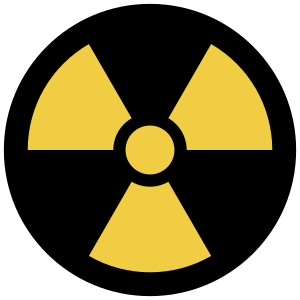Transuranic element facts for kids
A transuranic element is a special kind of chemical element. Think of the Periodic Table of Elements as a big chart of all the known building blocks of the universe. Uranium is an element on this chart. Any element that comes *after* Uranium on this chart is called a transuranic element.
All transuranic elements are radioactive. This means they are unstable and slowly change into other, lighter elements over time. Most of these elements are made by scientists in laboratories, not found naturally on Earth. Only two of them, Neptunium and Plutonium, can be found in very tiny amounts in nature, but even these are mostly made by people. Examples of transuranic elements include Neptunium, Plutonium, Americium, and even very heavy ones like Tennessine and Oganesson.
What are Transuranic Isotopes?
When we talk about the chemistry of transuranic elements, we notice something interesting: the heavier an element is (meaning it has a higher atomic number), the more radioactive it tends to be.
Elements can have different versions called isotopes. These are like siblings of the same element, having the same number of protons but different numbers of neutrons. Some isotopes of transuranic elements last a very long time, while others disappear almost instantly. For example, a type of Americium called Americium-243 has a half-life of about 7,370 years. This means it takes 7,370 years for half of a sample of Americium-243 to change into other elements. But a type of Tennessine called Tennessine-294 has a half-life of only 51 milliseconds (that's 0.051 seconds!).
How are Transuranic Elements Used?
Even though many transuranic elements are made in labs and are very rare, some have important uses:
- Plutonium is used as fuel in nuclear power plants to create electricity. It can also be used in nuclear weapons.
- Curium is used in special equipment, like the instruments on Mars rovers, to help them analyze rocks and soil.
- Berkelium is often used by scientists to create even newer, heavier elements, such as Tennessine.
- Americium is commonly found in smoke detectors in our homes. It helps the detector sense smoke and warn us of fires.
Many of the very heavy transuranic elements, like those from Fermium onward, don't have everyday uses. Scientists call the heaviest ones, from Rutherfordium to Oganesson, "superheavy elements." These are mainly studied for research to understand more about the universe's building blocks.
See also
 In Spanish: Elementos transuránicos para niños
In Spanish: Elementos transuránicos para niños


